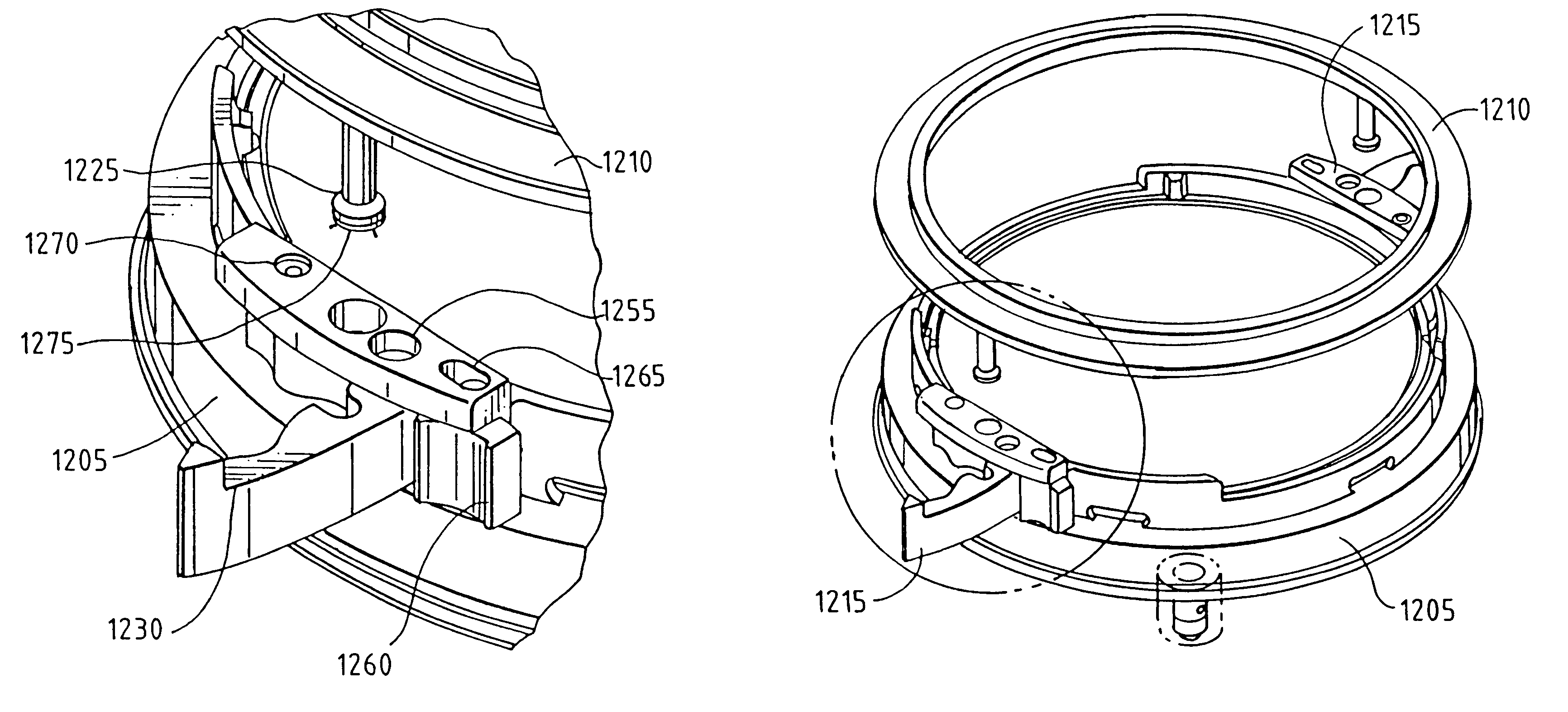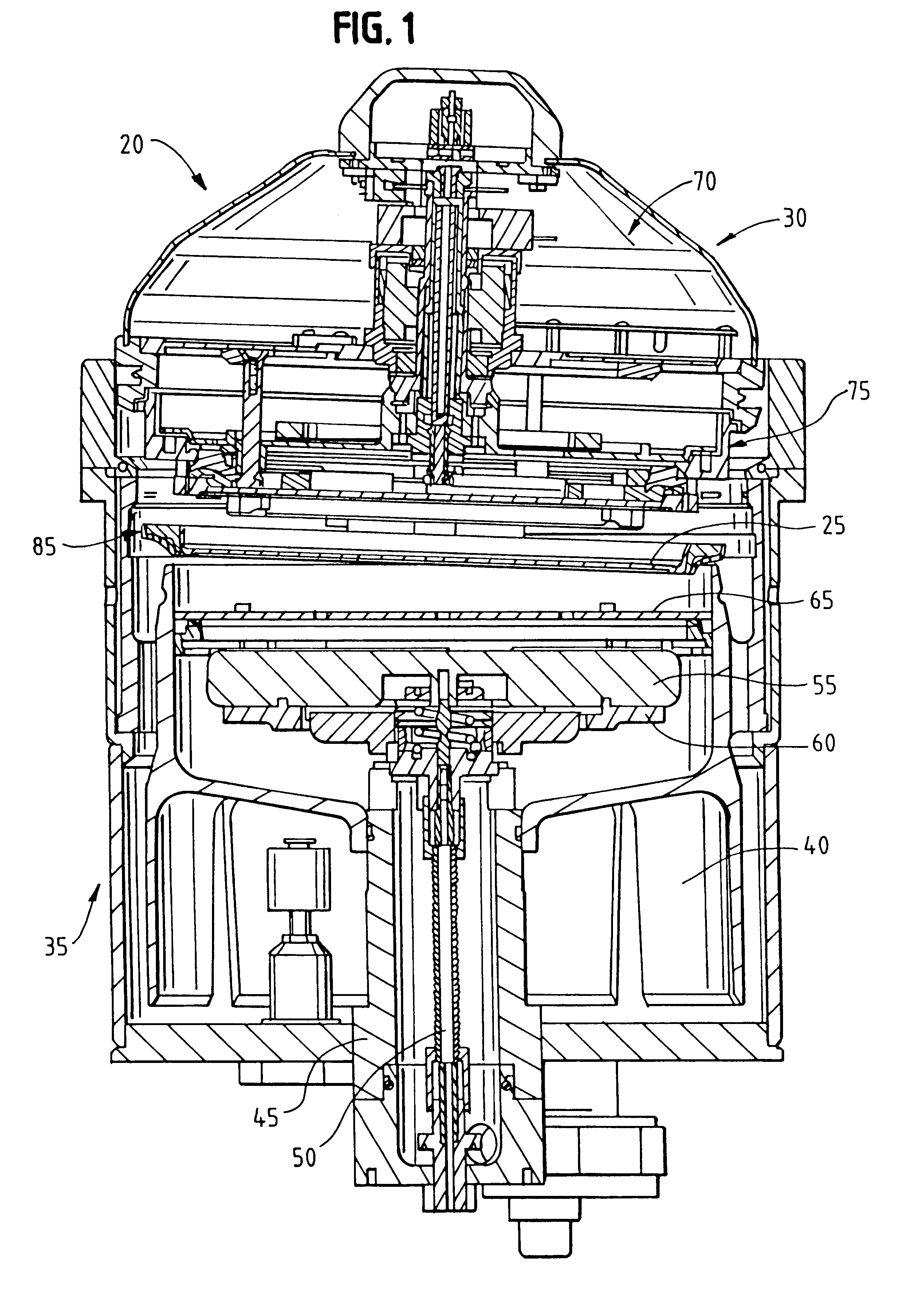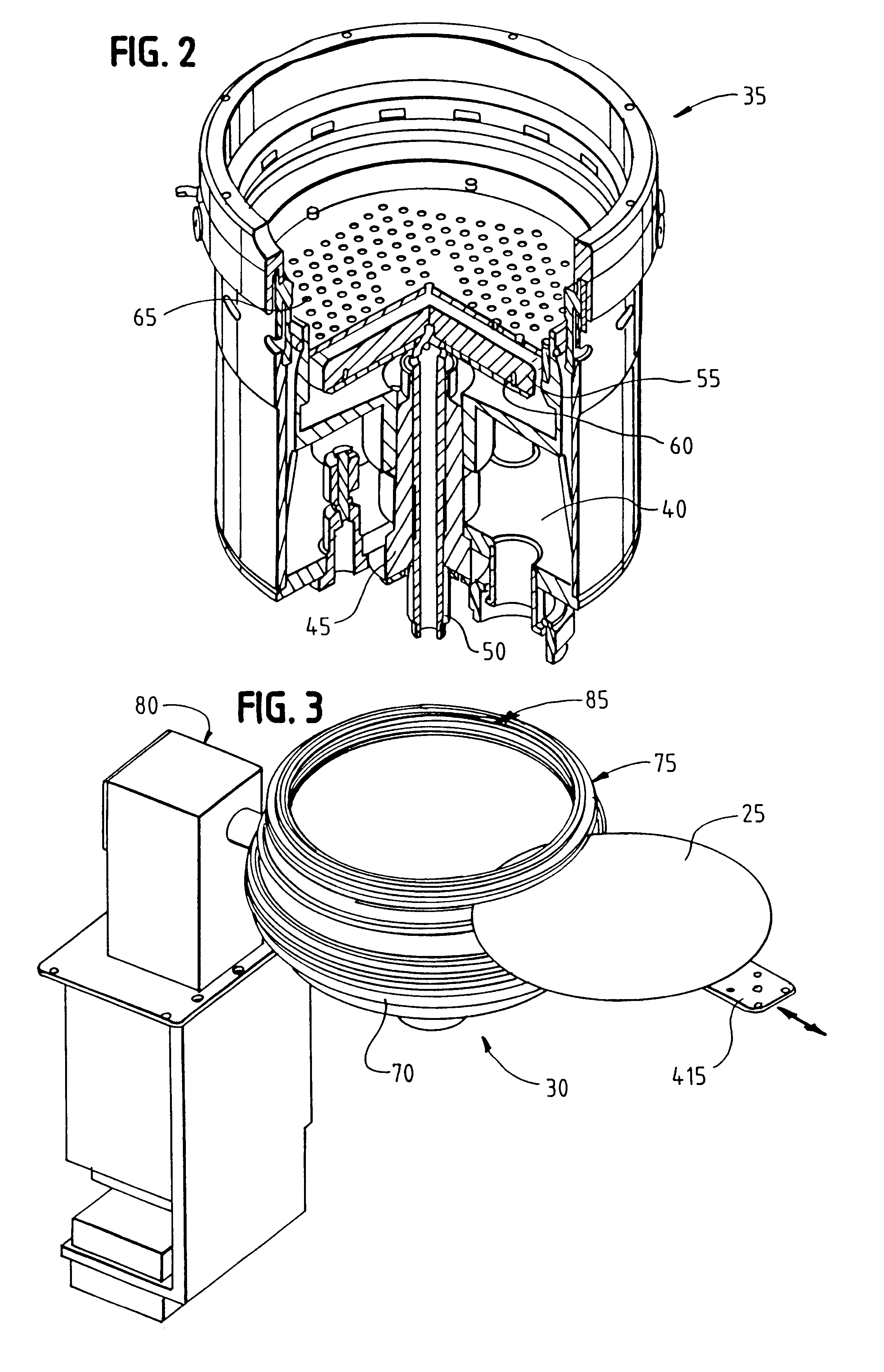Aparatus for processing the surface of a microelectronic workpiece
a microelectronic workpiece and surface technology, applied in the field of aparat, can solve the problems of increasing maintenance requirements, non-uniform deposition of plated metallic materials, and increasing the complexity of electroplating equipment, so as to reduce the risk of contamination
- Summary
- Abstract
- Description
- Claims
- Application Information
AI Technical Summary
Benefits of technology
Problems solved by technology
Method used
Image
Examples
first embodiment
a Bellville ring contact assembly is illustrated generally at 600 in in FIGS. 18-20. As illustrated, the contact assembly 600 comprises a conductive contact mount member 605, a Bellville ring contact 610, a dielectric wafer guide ring 615, and an outer body member 625. The outer, common portion 630 of the Bellville ring contact 610 includes a first side that is engaged within a notch 675 of the conductive base ring 605. In many respects, the Belleville ring contact assembly of this embodiment is similar in construction with the flexure contact assembly 85 described above. For that reason, the functionality of many of the structures of the contact assembly 600 will be apparent and will not be repeated here.
Preferably, the wafer guide ring 615 is formed from a dielectric material while contact mount member 605 is formed from a single, integral piece of conductive material or from a dielectric or other material that is coated with a conductive material at its exterior. Even more prefer...
PUM
| Property | Measurement | Unit |
|---|---|---|
| Power | aaaaa | aaaaa |
Abstract
Description
Claims
Application Information
 Login to View More
Login to View More - Generate Ideas
- Intellectual Property
- Life Sciences
- Materials
- Tech Scout
- Unparalleled Data Quality
- Higher Quality Content
- 60% Fewer Hallucinations
Browse by: Latest US Patents, China's latest patents, Technical Efficacy Thesaurus, Application Domain, Technology Topic, Popular Technical Reports.
© 2025 PatSnap. All rights reserved.Legal|Privacy policy|Modern Slavery Act Transparency Statement|Sitemap|About US| Contact US: help@patsnap.com



